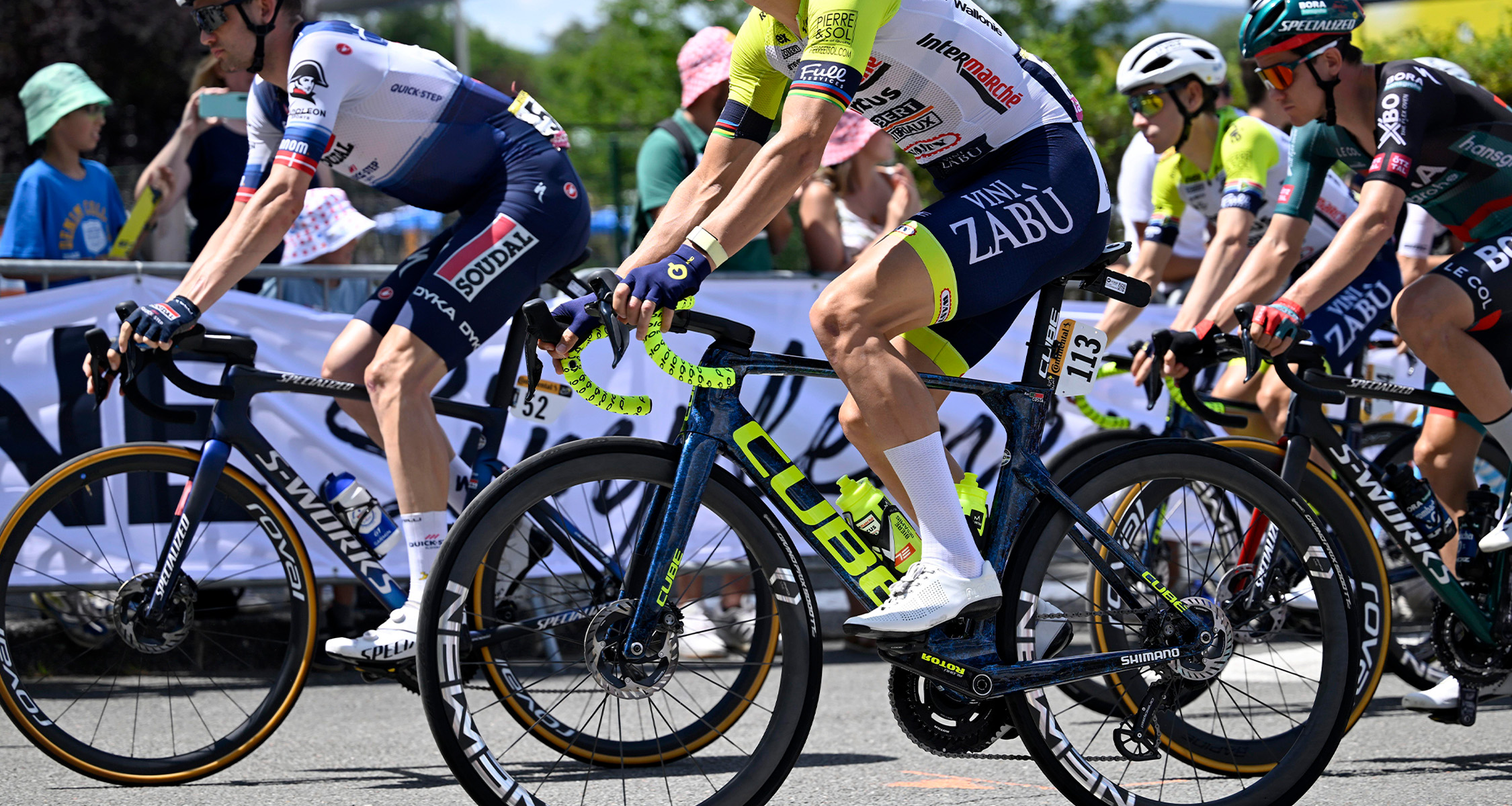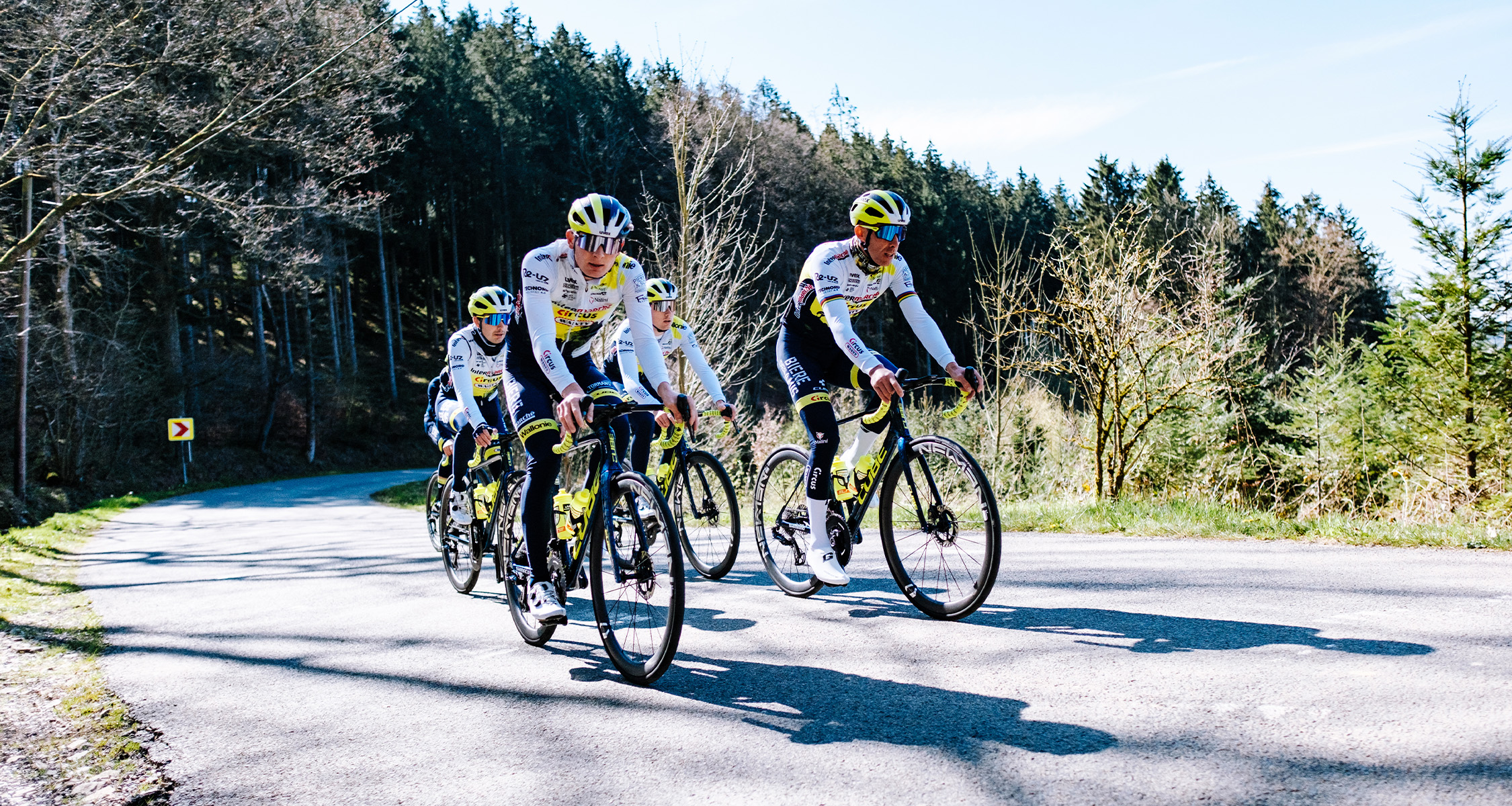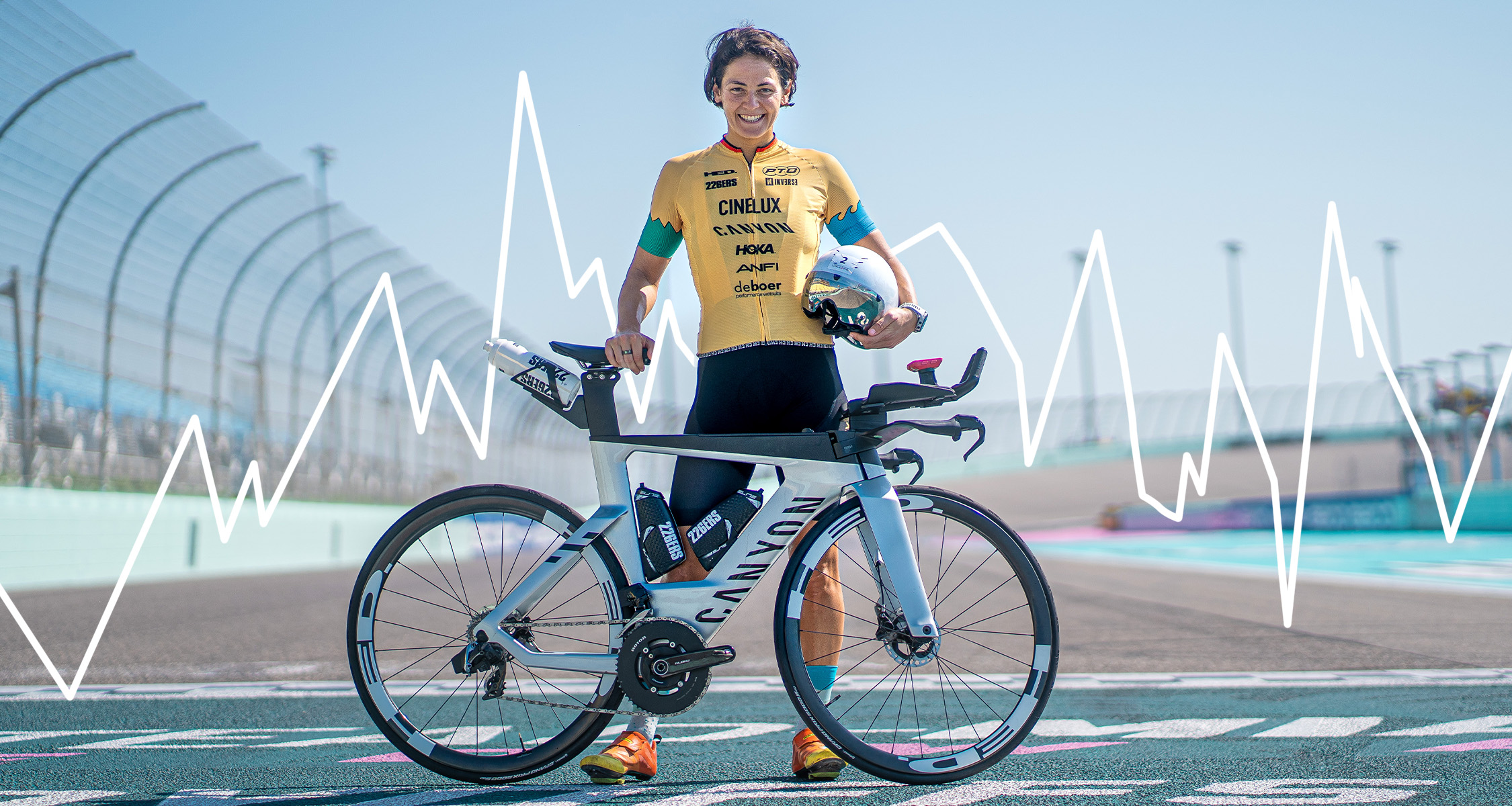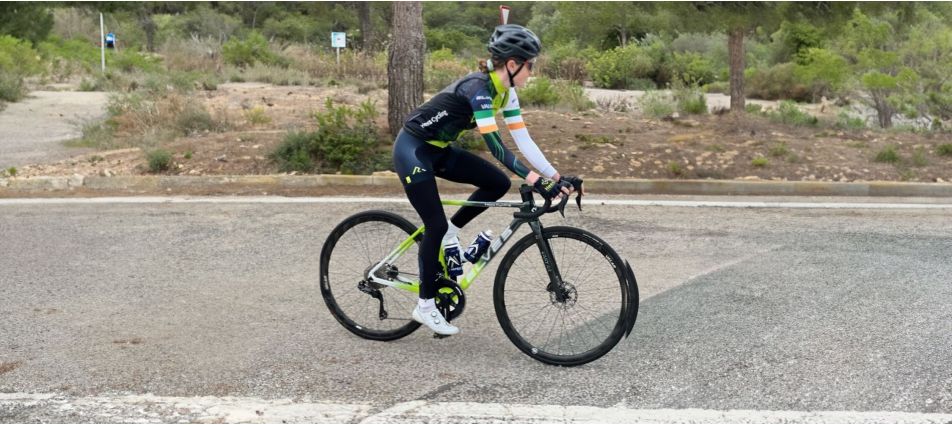How to Train with a Power Meter: Unleashing Your Cycling Potential
In the ever-evolving cycling world, technology continues to revolutionize how riders train and perform. Among the most groundbreaking advancements is the power meter – a small yet powerful device that is transforming the training landscape for cyclists of all levels.
What Is A Power Meter?
A power meter is a high-tech device attached to your bike that measures the power you generate while pedalling. The power is measured in watts, directly indicating the effort you put into each pedal stroke. Whether you're a recreational rider, a seasoned racer, or a triathlete, training with a power meter can take your performance to unprecedented heights.
A great example of a quality power meter, is the ROTOR INspider power meter. This offers cyclists a host of advantages. Firstly, it features dual-sided power measurement, accurately capturing data from both the left and right crank arms for more precise readings.


The power meter's Bluetooth and ANT+ connectivity enable effortless synchronization with cycling computers and smartphones. It uses advanced strain gauges that ensure reliable and accurate power output measurements. While offering compatibility across various cranksets, it caters to a wide range of cyclists and boasts an extended battery life of up to 200 hours on a single charge. Overall, it empowers cyclists with precise, convenient, and versatile power measurement, aiding in effective training and improved performance.
Power Zones and Functional Threshold Power (FTP) Test
Power Zones
To effectively train with a power meter, understanding power zones is essential. Power zones are specific intensity levels derived from your Functional Threshold Power (FTP), and they serve as the foundation for structuring your training sessions. Each power zone represents a range of power output, and training within these zones allows you to target different physiological adaptations, leading to improved cycling performance.
The Zone Model
Power zones are typically divided into several zones, usually numbered from 1 to 7, with Zone 1 being the easiest effort level and Zone 7 representing an all-out sprint effort. The most commonly used zone model is based on the percentage of your FTP:
· Zone 1: Active Recovery (< 55% FTP) - Very light effort used for recovery between more challenging workouts.
· Zone 2: Endurance (56-75% FTP) - A comfortable pace, suitable for long, steady rides.
· Zone 3: Tempo (76-90% FTP) - A moderate effort level often used for building aerobic fitness.
· Zone 4: Threshold (91-105% FTP) - Riding at the intensity just below your FTP to enhance your sustainable power output.
· Zone 5: VO2 Max (106-120% FTP) - High-intensity intervals to improve your maximum oxygen uptake capacity.
· Zone 6: Anaerobic Capacity (121-150% FTP) - Short, intense efforts to boost your ability to tolerate high levels of lactic acid.
· Zone 7: Neuromuscular Power (>150% FTP) - All-out sprints to enhance your leg speed and power.
Functional Threshold Power (FTP) Test
Your FTP is the most crucial metric in power-based training, as it serves as a reference point for establishing your power zones. FTP is the maximum average power you can sustain for one hour of all-out effort.
Since it's impractical for most cyclists to perform a one-hour test, various protocols have been devised to estimate FTP accurately.
One of the most popular FTP tests is the 20-minute FTP test. To perform this test, find a route or stretch of road that you can ride continuously for 20 minutes with maximum effort. It's essential to warm up adequately before starting the test to ensure accurate results. Once warmed up, ride the designated 20-minute effort all-out, aiming to maintain a steady and sustainable pace throughout.
After completing the 20-minute effort, record your average power for the entire duration. To calculate your FTP, take 95% of the average power from the test. This correction factor accounts that your sustainable power for an hour would typically be around 95% of the power you can sustain for 20 minutes. The resulting value is your FTP, which you can use to determine your power zones and structure your training accordingly.


Utilizing Power Zones in Your Training Plan to Achieve Your Goals
Training with power zones offers a structured, data-driven approach to cycling that can significantly enhance your performance and help you achieve your goals. Here's how you can make the most of each zone to target specific adaptations and optimize your training:
Endurance (Zone 2)
· Use Zone 2 for long, steady rides to build your aerobic base.
· Develop your ability to ride efficiently at a comfortable pace for extended periods.
· Focus on increasing your time in the saddle to build endurance.
Tempo (Zone 3)
· Incorporate Zone 3 efforts to enhance your aerobic capacity and lactate threshold.
· Perform sustained efforts at a moderately challenging pace.
· Utilize tempo intervals during longer rides to simulate race conditions.
Threshold (Zone 4)
· Training in Zone 4 will improve your sustainable power output and overall cycling speed.
· Incorporate threshold intervals to ride at or just below your FTP for extended periods.
· Consistently working in this zone will enhance your ability to push harder for longer.
VO2 Max (Zone 5)
· Boost your maximum oxygen uptake capacity and increase your ability to handle short, intense efforts.
· Perform VO2 max intervals, such as 3–5-minute efforts with short recoveries.
· These intervals will improve your ability to attack short, punchy climbs and respond to race accelerations.
Anaerobic Capacity (Zone 6)
· Increase your tolerance for high levels of lactic acid and improve your ability to sprint and attack.
· Perform short, high-power efforts with more extended recovery periods.
· Train in Zone 6 to excel in criteriums, short time trials, and sprint finishes.
Neuromuscular Power (Zone 7)
· Enhance your leg speed and explosive power with all-out sprints.
· Sprinting in Zone 7 helps improve your ability to respond quickly to race situations.
· Use these efforts sparingly and ensure proper recovery between sprints.
Crafting Your Training Plan
To design an effective training plan using power zones, consider the following steps:
Establish Clear Goals: Define your cycling objectives, whether completing a century ride, racing in a local criterium, or improving your overall fitness.
Identify Weaknesses: Pinpoint areas where you need improvement and tailor your training plan accordingly.
Plan Training Phases: Divide your training into specific phases, such as base training, build, and peak performance, to progress systematically towards your goals.
Mix Intensity Levels: Incorporate a variety of workouts across different power zones to target various energy systems and prevent training plateaus.
Monitor Progress: Regularly review and analyze your training data to track improvements and adjust your plan.
Allow for Recovery: Rest and recovery are crucial for optimal performance and injury prevention.
Seek Professional Guidance: Consider working with a qualified cycling coach who can create a personalized training plan based on your goals and power data.


Tracking Training Load: Understanding Training Stress Balance (TSB) for Optimal Performance
Monitoring your training load allows you to strike the delicate balance between pushing your limits for optimal gains and avoiding overtraining, which could lead to fatigue and potential injuries. One powerful metric that helps you achieve this equilibrium is the Training Stress Balance (TSB).
Understanding Training Stress Balance (TSB)
Training Stress Balance (TSB) is a crucial concept in power-based training that measures your cumulative training load relative to your recovery. It is a valuable tool for assessing your preparedness for an upcoming event or race. TSB is calculated using a simple formula that takes into account your Training Load (TL) and your Recovery Load (RL):
TSB = TL - RL
Training Load (TL) refers to the cumulative stress your body experiences from training sessions, and it is typically quantified using a metric called Training Stress Score (TSS). TSS is calculated based on the intensity and duration of your workouts, giving you a numerical value representing each session's physiological impact.
Recovery Load (RL) represents your body's ability to recover and adapt from the training stress. Recovery is essential for your body to rebuild and strengthen, leading to improved performance. Factors like rest, nutrition, and sleep contribute to your overall recovery.
Why Pay Attention to TSB?
Maintaining a positive TSB indicates that you have a higher recovery level than your training load. A positive TSB suggests you are well-rested and prepared to perform at your best. On the other hand, a negative TSB means your training load is currently higher than your recovery level, and you might be fatigued or at risk of overtraining
Tracking TSB Using Training Platforms
Several training platforms, such as Trainingpeaks and cycling apps like Strava, integrate TSB into their analytics to simplify the process for cyclists. These platforms often provide easy-to-understand charts and graphs visually representing your TSB trends.
Remember, while TSB is an excellent tool for gauging your training and recovery balance, it's essential to consider other factors, such as your personal experience, sleep quality, and overall well-being, to make informed training decisions.
In fact, training with a power meter is a game-changer for cyclists of all levels. Understanding power zones, conducting the FTP test, and tracking your Training Stress Balance allow you to train smarter and more efficiently.
Leveraging your power meter for performance testing lets you objectively measure progress and set goals. Embrace the data, fine-tune your training plan, and watch your cycling performance soar.
Happy Riding #ROTORian




